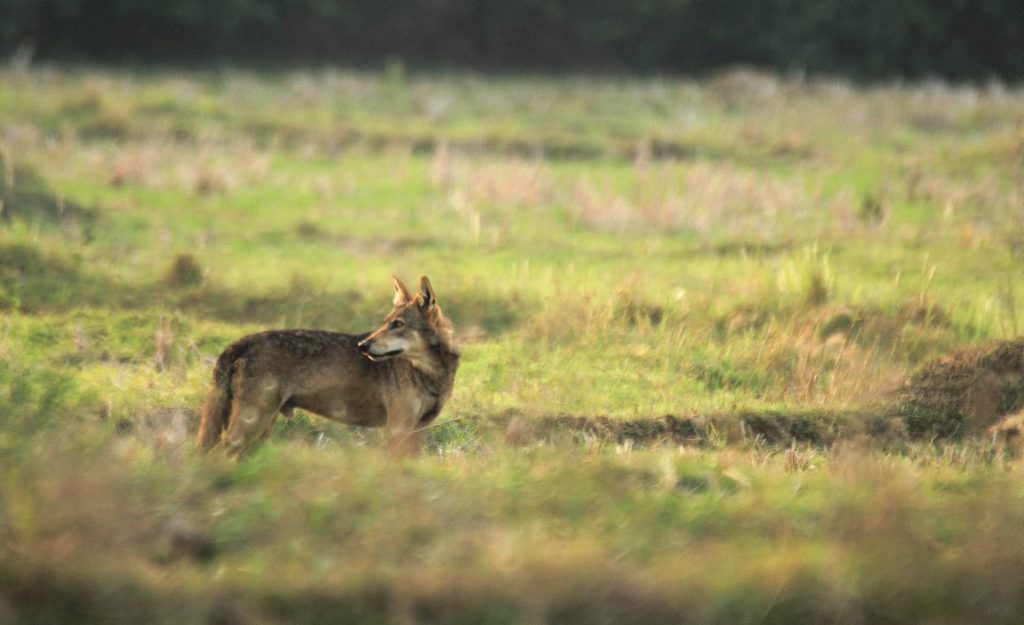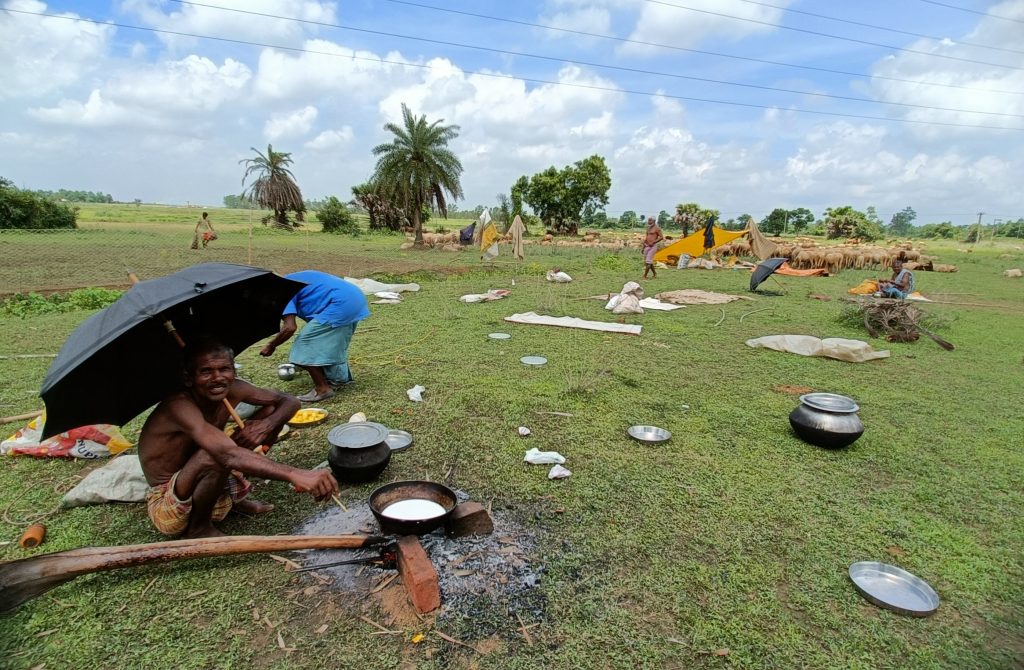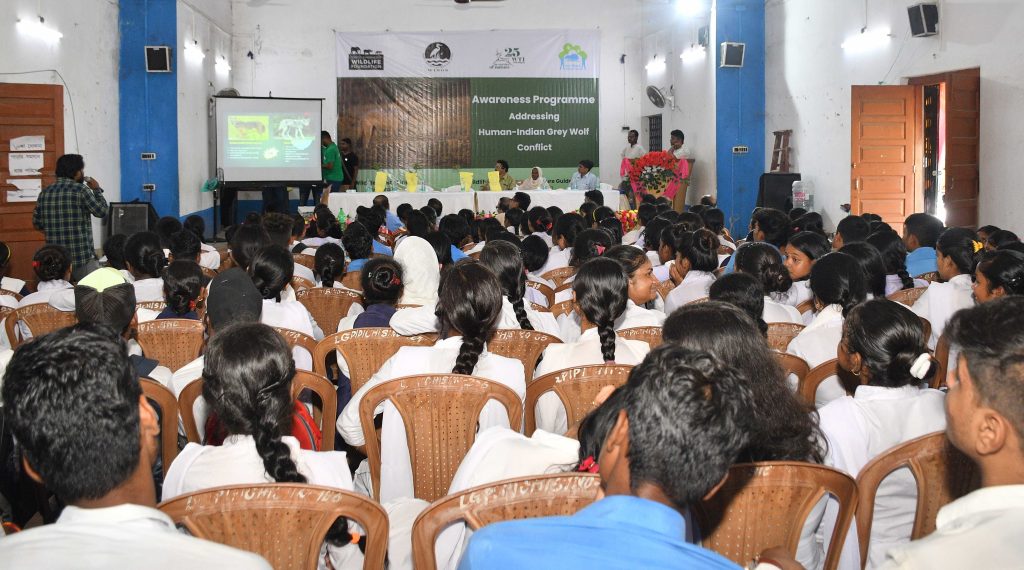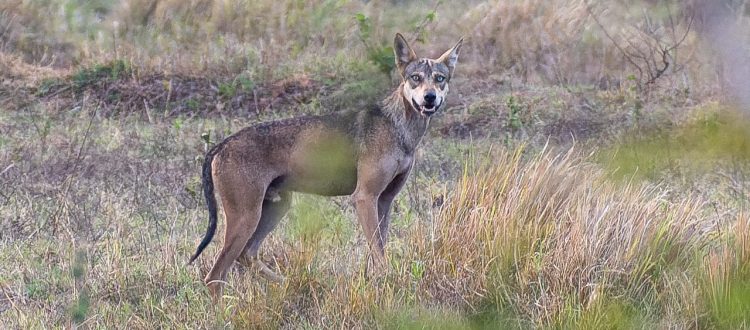Protecting the Indian grey wolf of Durgapur
Remember Akela from Rudyard Kipling’s Jungle Book? The leader of the wolf pack, he adopts Mowgli when he is lost in the jungle, becomes his mentor, and this makes for one of the most renowned stories of our times. Akela, or the “solitary one” was an Indian grey wolf that represented strength, genius and honour. True to the actual animal, Indian grey wolves are one of the most iconic species in the Indian wilderness.
Unfortunately, their numbers in the wild have been on the decline. An endangered species on IUCN’s Red List, its population is estimated between 2000 and 3000 individuals. Placed under Schedule I of India’s Wildlife (Protection) Act, 1972, the Indian grey wolf (Canis lupus pallipes) is accorded the highest level of protection in an effort to protect its numbers.

An Indian grey wolf in the grasslands of Durgapur | Photograph by WINGS
The wolves of Durgapur
Locally known as the ‘Hural’, not much was known about the Indian grey wolf from the state of West Bengal. Consequently, it was an exciting surprise when for the first time in 2016, Milan Kanti Mandal, DFO, captured a photograph of the animal in an abandoned air base (used during World War II) on the outskirts of Durgapur. The presence of the species was confirmed when the wolf was sighted a second time in an agricultural field.
Durgapur, a town that has been known for its industrial expanses and industries like the Steel Authority of India Limited (SAIL), and Eastern Coalfields Limited (ECL), was the least of contenders when it came to hosting the Indian grey wolves. However, its presence can be credited to the massive afforestation activities that have been done in the recent past by the local forest department.
This points to the high adaptability of the wolf as a species and also its struggle to survive in a landscape that is increasingly dominated by human activities. However, the shrinking natural forests have led the carnivore species to largely depend on domestic livestock thus giving rise to negative interaction with humans.
Protecting the Indian grey wolves of Durgapur
WINGS (Wildlife Information and Nature Guide Society), a Durgapur-based wildlife conservation organisation of West Bengal and Wildlife Trust India (WTI) joined hands on conserving this highly elusive carnivore species, residing mostly outside Protected Area (PA) through a Rapid Action Project (RAP). The team has initiated the conservation project through preliminary household surveys on livestock depredation by grey wolves in Laudoha, and Madhaigunj regions. Documenting the presence in open forests through camera trapping, direct signs including pugmarks, scat and identifying their corridor between fragmented forest patches is also helping create awareness among local communities. The major objectives of the project are to assess the distribution of the grey wolf population in the region, point out the primary areas of conflict and find out the probable actions required to reduce the conflict with humans. During our project site visit, we interacted with nomadic shepherds, who have regularly reported the issue of cattle lifting by grey wolves.

Nomadic herder in the outskirts of Durgapur township | Photograph by Samrat Paul
No conservation outcome would be possible without involving the local community. Recently, an awareness program was organised in Laudoha by WINGS involving school students from Laudoha Kali Tara Bijoy (LKT) Institution where wildlife researcher Mr. Debayan Gayen from Dept. of Conservation Biology, Durgapur Govt. college through audio-visual interfaces explained about wolf behaviour, feeding ecology and the factors behind human-grey wolf conflict. DFO, Shri Buddhadeb Mondal, praised such collaboration between two organisations to put conservation effort for this Schedule-I species. He added that grey wolves are the pride of the Durgapur region and local people, especially the new generations, must come forward and contribute towards its long-term survival in the wild.

Mr. Debayan Gayen presenting about the Indian grey wolf – Photograph by WINGS
Shri Bidyut Sarkar, Chief Conservator of Forest (CCF), South-East Circle, also expressed his concern and urgency of focusing on the long-term conservation of this lesser-known species. He also added that conservation efforts must not only be restricted to charismatic species like tigers and elephants but also these carnivores that play a key role in the food chain and the ecological balance.
Continuous efforts of the Forest Department, NGOs, local communities, policymakers and other stakeholders can bring positive changes for the long-term sustenance of this beautiful animal. We hope that the wolves of Durgapur become a shining example of co-existence between humans and wildlife.
Working through collaborations with grassroots organisations, government agencies and community stakeholders, Rapid Action Projects such as this, help in overcoming spatial and temporal limitations to provide help where and when it is needed the most.









